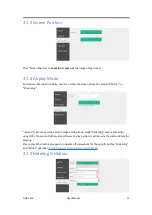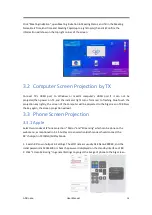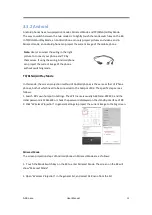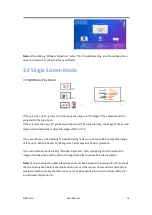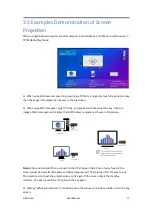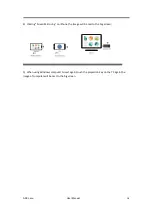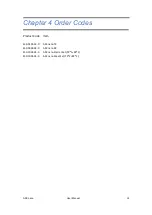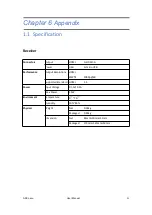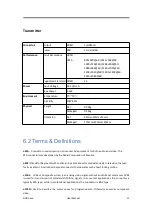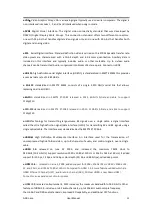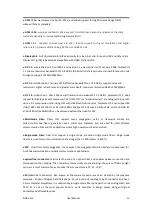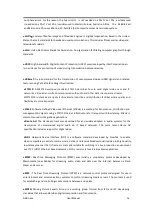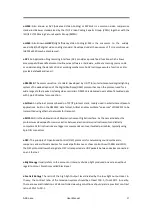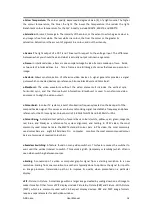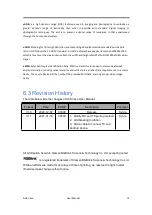
ASK nano
User Manual
27
●
H.264:
Also known as AVC (Advanced Video Coding) or MPEG-4i is a common video compression
standard. H.264 was standardized by the ITU-T Video Coding Experts Group (VCEG) together with the
ISO/IEC JTC1 Moving Picture Experts Group (MPEG).
●
H.265:
Also known as
HEVC
(High Efficiency Video Coding )H.265 is the successor to the widely
used H.264/AVC digital video coding standard. Developed under the auspices of ITU, resolutions up
to8192x4320 maybe compressed.
●
API:
An Application Programming Interface (API) provides a predefined function which allows
accesscapabilitiesandfeaturesorroutinesviaasoftware or hardware, without accessing source code
or understanding the details of inner working mechanism. AnAPI call may execute a function and/or
provide datafeedback/report.
●DMX512:
The communication standard developed by USITT for entertainment and digital lighting
systems.The wide adoption of the Digital Multiplex (DMX) protocol has seen the protocol used for a
wide range of other devices including video controllers. DMX512 is delivered over cable of 2 twisted pairs
with 5pin XLR cables for connection.
●ArtNet:
An ethernet protocol based on TCP/IP protocol stack, mainly used in entertainment/events
applications. Built on the DMX512 data format, ArtNet enables multiple “universes” of DMX512 to be
transmitted using ethernet networks for transport.
●
MIDI:
MIDI is the abbreviation of Musical Instrument Digital Interface. As the name indicates the
protocol was developed for communication between electronical musical instruments and latterly
computers. MIDI instructions are triggers or commands sent over twisted pair cables, typically using
5pin DIN connectors
.
●
OSC:
The principle of Open Sound Control (OSC) protocol is for networking sound synthesizers,
computers, and multimedia devices for musical performance or show control. As with XML and JSON,
the OSC protocol allows sharing data. OSC is transported via UDP packets between devices connected
on an Ethernet.
●
Brightness
:
Usually refers to the amount or intensity of video light produced on a screen without
regard to colour. Sometimes called black level.
●
Contrast Ratio
:
The ratio of the high light output level divided by the low light output level. In
theory, the contrast ratio of the television system should be at least 100:1, if not 300:1. In reality,
there are several limitations. Well-controlled viewing conditions should yield a practical contrast
ratio of 30:1 to 50:1.

